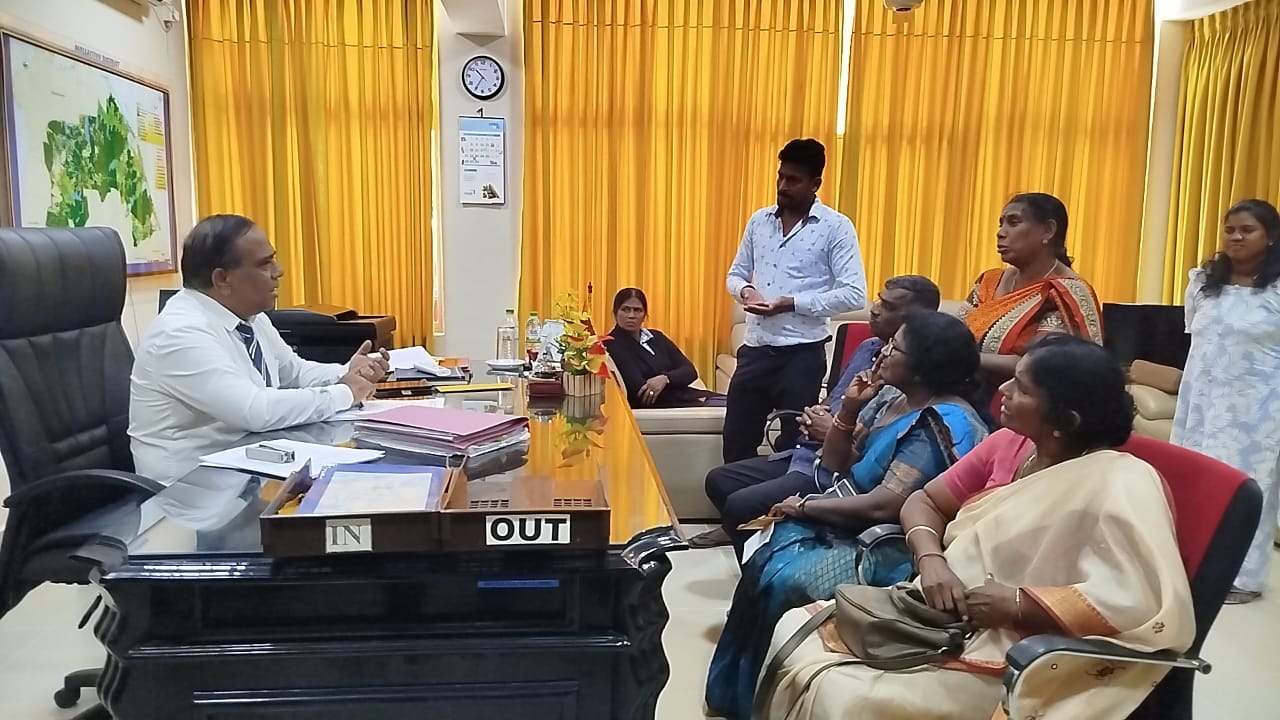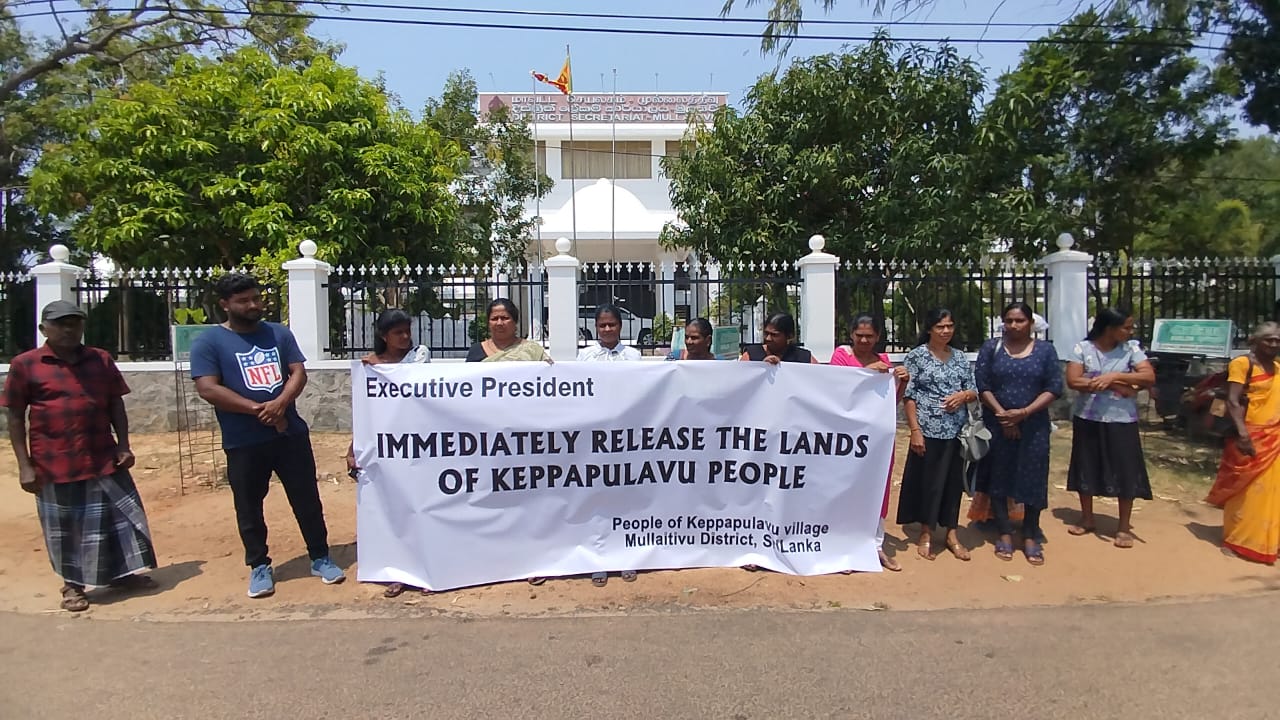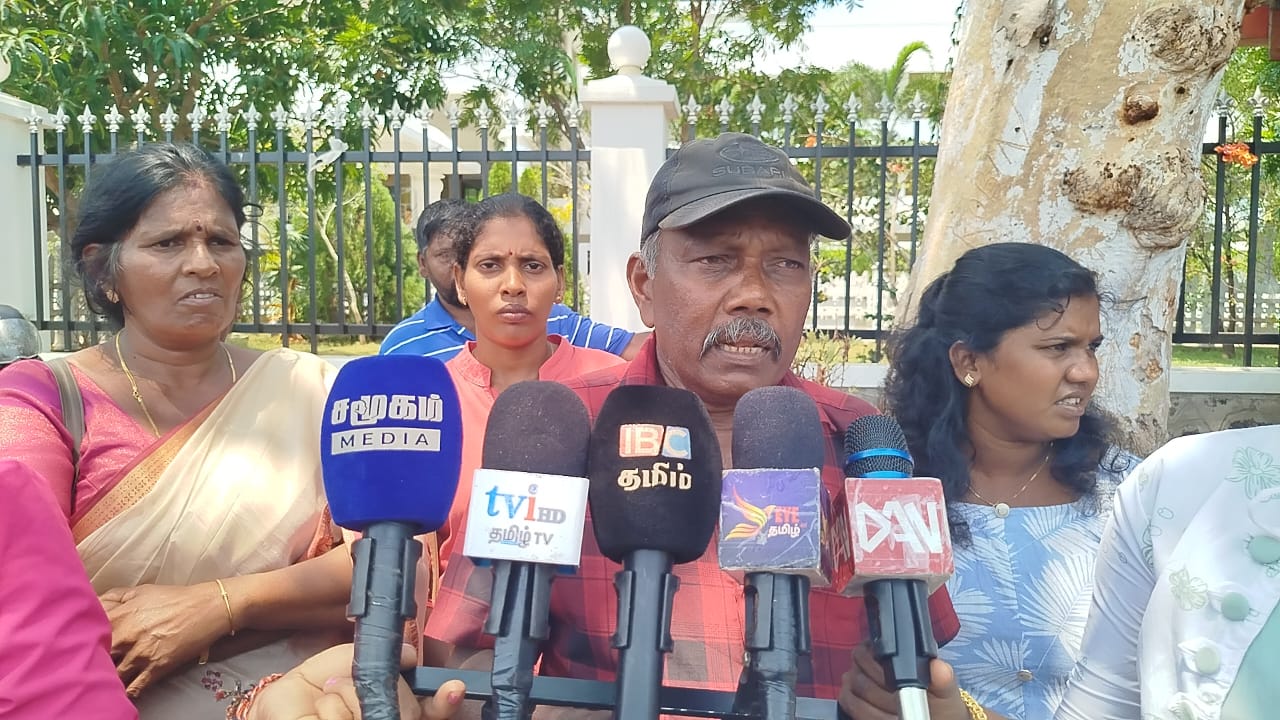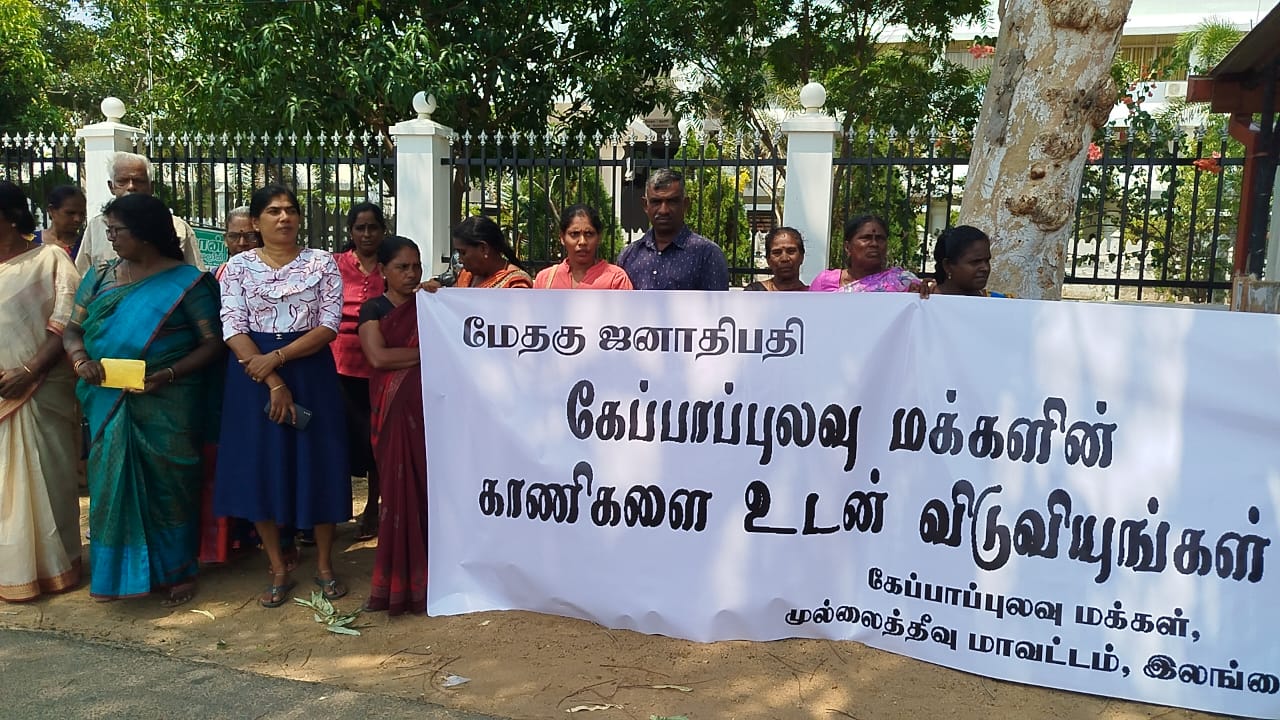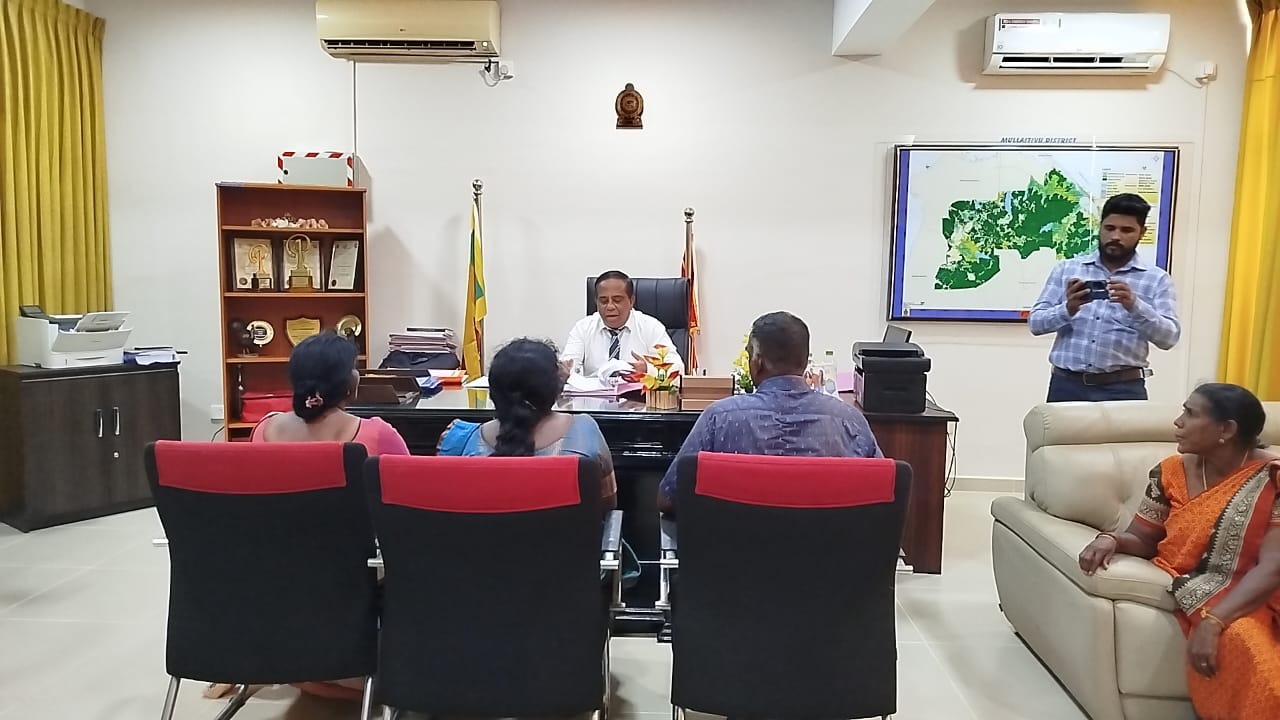
The residents of Keppapulavu, Mullaitivu staged a demonstration in front of the Mullaitivu District Secretariat on 11th April, urging the immediate release of their lands from military occupation, and submitted a formal request to the District Secretariat.
Carrying banners that read “Sri Lankan President please release the lands of the Keppapulavu people immediately”, the protest was held as a peaceful awareness campaign, in front of the Mullaitivu District Secretariat office.
Following the demonstration, the protesters met with the Mullaitivu District Secretariat, Mr. A. Umamaheshwaran, urging him to exert pressure for the prompt release of their lands.
The residents pointed out that during a meeting held on April 10, 2025, at the Presidential Secretariat, officials had informed them that no information was available concerning their land issue.
In response, the District Secretariat explained that a letter had already been sent from the Presidential Secretariat instructing the district authorities to gather information regarding the Keppapulavu lands. He assured the residents that necessary actions were underway in this regard and he also presented the letters sent to the relevant authorities for the protesters’ reference.
It is noteworthy that 59.5 acres of land belonging to 55 families in Keppapulavu remain under military control and have yet to be released.
A report published in 2017 by PEARL, entitled ‘Normalising the Abnormal: The Militarisation of Mullaitivu District’, detailed the ongoing militarisation of Mullaitivu. It found that there was a Sri Lankan military presence of at least 60,000 personnel among just over 130,322 civilians. The figures indicate that 25% of the Sri Lankan Army is currently occupying a district with only 0.6% of the population of Sri Lanka.
